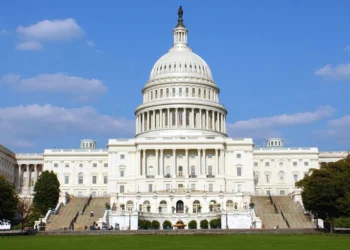In the realm of finance, the term “higher interest rates” often elicits mixed reactions. Some might perceive it as a harbinger of financial doom, while others see it as an emblem of prosperity. It’s the kind of topic that sparks discussions around dinner tables and fills news headlines. Today, we’re diving into this economic phenomenon, exploring why higher interest rates can indeed be a boon for most people.
The Dynamics of Interest Rates
Interest rates, the financial world’s heartbeat, influence our economic decisions in more ways than we often realize. They can determine the cost of borrowing, the attractiveness of savings, and the overall health of an economy. When central banks adjust interest rates, they are essentially tweaking the cost of money in an effort to manage inflation, spur economic growth, or cool down an overheating economy.

The Power of Higher Interest Rates
Unlocking Investment Opportunities
Higher interest rates wield a surprising power: they can open doors to lucrative investment opportunities. One of the key beneficiaries of this phenomenon is the realm of real estate. As interest rates climb, traditional savings accounts and bonds start offering more enticing returns. However, the real magic happens in the world of real estate investing, where savvy investors can capitalize on the shift in market dynamics.
Consider this internal link: The Power of Real Estate: Unlocking Cashflow Investment Opportunities.
Historically, real estate has proven to be a tangible asset with the potential for both appreciation and rental income. As interest rates rise, the appeal of traditional investments like savings accounts diminishes, steering investors towards alternatives that promise greater returns. Real estate, with its potential for generating cash flow through rental income, becomes an attractive option.
Additionally, real estate investment trusts (REITs) gain traction during high-interest-rate periods. REITs allow investors to access real estate markets without directly owning properties. These trusts often offer attractive dividends, making them an appealing addition to investment portfolios seeking income generation.
Building a Bond Portfolio
A higher interest rate environment brings cheers to those interested in fixed-income investments, especially bonds. Bonds, often considered a safer investment option, become more appealing as their yields align with prevailing interest rates. The inverse relationship between bond prices and interest rates means that as rates rise, new bonds are issued with higher yields, making them more attractive to investors.
This scenario provides an opportunity to build a diversified bond portfolio that can provide a steady stream of income. Bonds from different issuers, industries, and maturities can come together to create a balanced investment strategy that offers stability and consistent returns.
Creating a bond ladder, which involves investing in bonds with different maturity dates, can further enhance the benefits of a rising interest rate environment. As bonds mature, investors can reinvest the proceeds in new bonds with higher yields, maximizing their income potential.
Comparing Bonds and Stocks in a High-Interest-Rate Scenario
The question that often arises when interest rates climb is whether to invest in bonds or stocks. Both asset classes have their merits, but their performance can vary based on the prevailing interest rate environment.
Bonds
In a high-interest-rate environment, bonds tend to shine. As interest rates increase, newly issued bonds come with higher yields, making them more attractive to investors seeking income. Bondholders benefit from predictable interest payments and the assurance of receiving their principal back upon maturity.
However, it’s important to note that bond prices can experience a decline when interest rates rise. This is because existing bonds with lower yields become less attractive compared to newly issued bonds. Despite this potential price volatility, the income generated from bonds can provide stability to an investment portfolio.
Stocks
Stocks, on the other hand, often face greater scrutiny in a high-interest-rate environment. As interest rates climb, the cost of borrowing increases for companies, potentially affecting their profitability. Additionally, higher interest rates can lead to a shift in investor preferences towards bonds due to their enhanced yields and perceived safety.
However, it’s crucial to recognize that the stock market’s performance is influenced by a multitude of factors beyond interest rates. Economic growth, corporate earnings, and geopolitical events all play roles in shaping stock market trends. In certain cases, a robust economy driven by higher interest rates can boost corporate earnings, offsetting the negative impact of borrowing costs.
Navigating the Positive Terrain
Reducing Competition in the Housing Market
For individuals seeking to make a foray into homeownership, higher interest rates can prove to be a blessing in disguise. While it might seem counterintuitive, a market with higher rates often translates to lower demand, thereby reducing competition in the housing market.
Potential homebuyers who have been diligently saving for their dream homes can find themselves in a more advantageous position. The reduced demand leads to softened prices and gives buyers greater negotiating power. This is particularly beneficial for those looking to settle down for the long haul, as they can secure a property at a more reasonable price.
Moreover, this environment can lead to more rational decision-making. Buyers are less likely to rush into purchases and are more likely to carefully assess their options, leading to a healthier real estate market overall.

The Flip Side: Who Bears the Brunt?
While higher interest rates lay the groundwork for prosperity for many, certain segments of the population bear the brunt of this financial shift.
Prolific Spenders
Individuals accustomed to living beyond their means and accumulating credit card debt might find the going tougher in a high-interest environment. As borrowing costs increase, carrying high balances on credit cards becomes a more expensive endeavor. This financial squeeze can be a wake-up call for those needing a reality check on their spending habits.
Mounting Debt Burden
For those already saddled with substantial debt, whether in the form of student loans, personal loans, or credit card debt, higher interest rates can exacerbate the burden. As the cost of servicing debt rises, managing payments becomes more challenging, potentially leading to financial stress and difficulty in meeting other financial goals.
First-Time Homebuyers
While we discussed the advantage of reduced competition in the housing market, it’s important to note that not all aspects are rosy for potential homeowners. First-time homebuyers often face hurdles like down payment requirements and closing costs. In a higher interest rate scenario, these upfront costs can become even more substantial, creating barriers to entry for those eager to step onto the property ladder.
A Final Word
In the world of finance, perceptions can often be deceiving. What seems like a negative shift on the surface can hold a plethora of opportunities for those willing to delve deeper. Higher interest rates might carry an air of uncertainty, but they also bring forth a chance to revamp investment strategies, explore new avenues, and approach the market with a fresh perspective.
As we’ve explored, higher interest rates can be particularly beneficial for individuals looking to invest in real estate and build diversified bond portfolios. The potential for reduced competition in the housing market further sweetens the deal for aspiring homeowners. However, it’s important to recognize that while many stand to gain, there are those who will face challenges, particularly those with spendthrift tendencies, existing debt burdens, and aspirations of homeownership.
In the ever-evolving landscape of finance, adapting to change is key. As interest rates ebb and flow, understanding the implications and leveraging the opportunities can set you on a path towards financial success.
“The secret to success is to know something nobody else knows.”
— Aristotle Onassis
Remember, in the realm of finance, knowledge truly is power.
Sources:
- Investopedia – Interest Rate Definition
- The Balance – Interest Rates and How They Work
- Forbes – If Interest Rates Were To Rise, What Happens To Stock Prices?
Note: This blog post is for informational purposes only and does not constitute financial advice. Please consult a financial advisor before making any investment decisions.















































